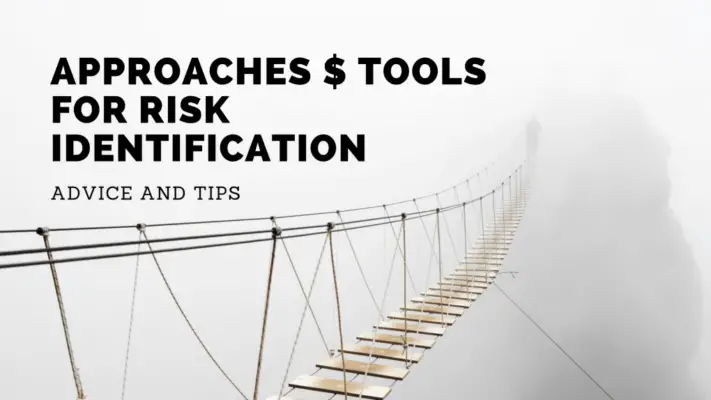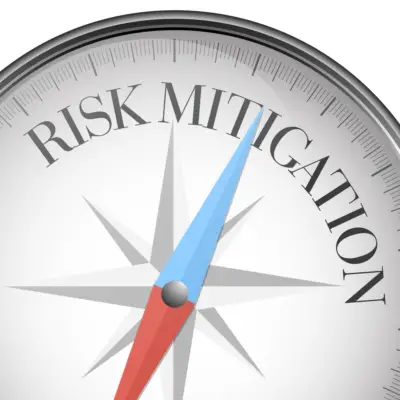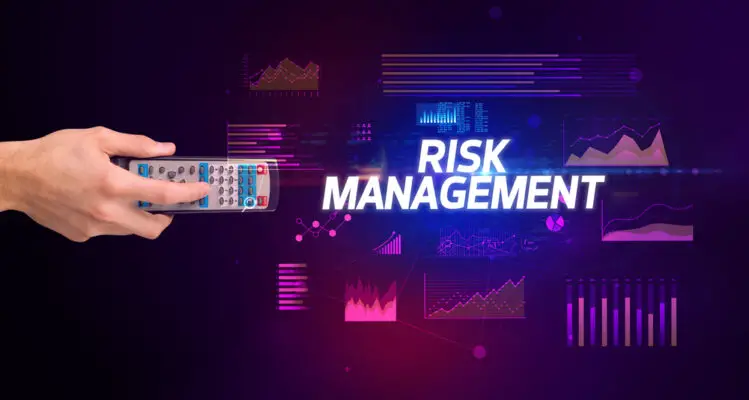Risk identification aims to identify potential hazards and assess the associated risks to determine how likely someone could be harmed and how severe that harm could be.
Risk identification is the first step in the risk management process. It involves recognising potential risks that could negatively impact an organization’s ability to operate or achieve its objectives.
Risk identification can be carried out using various techniques and approaches, including:
Brainstorming: Engaging team members or stakeholders in discussions to identify potential risks based on their experiences and insights.
Checklists: Using historical data and the experiences of similar projects or operations to create a checklist of common risks.
Interviews or Surveys: Gathering information from individuals who have knowledge of the project, the work environment, or the context in which the organization operates.
SWOT Analysis: Identifying Strengths, Weaknesses, Opportunities, and Threats (SWOT) can help reveal risks that can be addressed or mitigated.
Scenario Analysis: Imagining different scenarios or situations that could occur and identifying the risks associated with each scenario.
Expert Systems: Utilizing AI-based or other sophisticated systems to predict and identify potential risks.
Risk identification should be ongoing, as new risks can emerge as circumstances change. Once risks are identified, they need to be analyzed regarding their potential impact and likelihood of occurrence and prioritized to address the most significant risks first.
Depending on their nature and potential impact, the organization can then develop strategies to mitigate, transfer, avoid, or accept these risks.
Once risks have been identified, appropriate changes can be made to manage health and safety effectively.
Risk identification involves several steps, including hazard identification, risk assessment, and making changes to manage health and safety. Hazard identification involves spotting potential workplace hazards or sources of harm.
In contrast, risk assessment involves evaluating those hazards to determine the likelihood of harm occurring and its severity. Control measures are then implemented based on the outcome of the assessment to minimize or eliminate any identified risks.
This article will explore these concepts in more detail and provide useful information on additional safety measures available to businesses to manage WHS risks effectively.

Overview of Risk Identification
The initial stage of effective workplace health and safety management involves systematically assessing potential hazards. This process is called risk identification.
Identifying risks is crucial because it enables employers to take measures to prevent accidents, injuries, or harm to workers in the workplace.
The risk identification process includes hazard identification, risk assessment, and risk control. Hazard identification is the first step in the risk identification process.
It involves identifying potential sources of harm or danger that may cause injury or damage to workers in the workplace. Workplace hazards can be physical, chemical, biological, or ergonomic.
They can include unsafe conditions, such as poor lighting or slippery floors, as well as unsafe practices, like incorrect use of equipment.
Risk assessment is the second step in the risk identification process. It involves evaluating how likely a particular hazard will cause harm and how serious that harm could be if it occurs.
Risk assessments help employers prioritize which risks need immediate attention and which can be addressed later.
Once risks have been identified and assessed, employers can move on to the third step of the identification process: implementing appropriate measures for controlling those risks.
Sources of Hazards
Hazards can originate from different sources, such as physical, chemical, biological, ergonomic, and psychosocial factors. Physical hazards may include slips, trips, falls, or machinery-related accidents.
Chemical hazards can arise from exposure to toxic substances like chemicals or fumes. Biological risks may come from contact with bacteria or viruses in the workplace.
Ergonomic factors refer to poor posture or repetitive motions that can lead to musculoskeletal disorders. Finally, psychosocial risks stem from stressors like bullying or harassment.
Risk management involves identifying these potential sources of harm and assessing their likelihood and severity of injury. This process is crucial in preventing incidents and ensuring a safe work environment for employees.
Responsible parties for managing WHS risks include employers, workers, contractors, and other relevant stakeholders who must ensure workplace safety according to established legal frameworks.
The step-by-step process for managing risks includes:
- Identifying hazards through regular inspections and assessments.
- Evaluating the level of risk associated with each hazard.
- Implementing control measures that eliminate or reduce exposure.
- Reviewing effectiveness regularly.
- Communicating this information effectively throughout the organization.
- Providing training on procedures related to hazard identification and response mechanisms.
- Ensuring compliance with relevant legislation and regulations.
- Documenting all steps taken during the risk identification process for future reference purposes.
Supporting information resources are available online through government agencies like Safe Work Australia (SWA), which provides guidance on WHS duties but has limited advice on specific issues due to variations across industries and workplaces.
Assessment of Risks
Risk assessment involves identifying potential hazards, evaluating the likelihood of harm occurring due to those hazards, and assessing the level of risk posed.
This process helps organizations prioritize risks based on their potential impact, develop appropriate control measures, and allocate resources effectively to reduce or eliminate identified risks.
The responsibility for conducting risk assessments often falls to employers or other responsible parties with a duty of care towards employees or others affected by work activities.
The process typically involves several steps, including identifying and describing the hazard, determining who might be harmed by it, evaluating the likelihood that harm will occur, and assessing the severity of any resulting injury or damage.
Once these elements have been assessed, appropriate control measures can be implemented to minimize risk.
Effective risk management requires ongoing monitoring and review to ensure that control measures remain effective.
Regular reviews should also identify new or emerging risks that may need to be addressed.
Control Measures
Effective control measures are essential to ensuring workplace safety and preventing accidents and injuries. These measures are the actions that an organization takes to eliminate or reduce risk after conducting a risk assessment.
While it can be challenging to identify all hazards in the workplace, implementing control measures can help prevent accidents.
Here are five examples of additional safety measures that organizations can take:
- Regular maintenance and inspection of equipment.
- Providing adequate training for workers on how to use equipment safely.
- Developing emergency response plans for different scenarios.
- Conducting regular safety audits of the workplace.
- Encouraging workers to report any hazards or unsafe conditions they observe.
The step-by-step process of hazard identification, risk assessment, and implementing control measures is critical in managing risks at work.
Once organizations have identified potential hazards in their workplaces, they must assess the risks associated with those hazards and determine which steps need to be taken to eliminate or minimize them.
Organizations can promote a safe working environment by taking steps such as regular maintenance and inspections, providing worker training, developing emergency response plans, conducting safety audits, and encouraging reporting of unsafe conditions.
Through ongoing risk management processes such as hazard identification, risk assessment, and implementation of control measures, businesses can ensure their continued success by minimizing potentially harmful incidents in the workplace.
Risk Management Strategies
Implementing effective risk management strategies is crucial in creating safe working environments and preventing accidents and injuries in the workplace.
Risk identification is the first step in the risk management process, where potential hazards are identified and evaluated to determine their level of risk.
This involves conducting a thorough hazard identification process, which includes inspecting the work environment, reviewing incident reports, and consulting with workers.
Once potential hazards have been identified, the next step is to conduct a risk assessment.
This involves evaluating the likelihood of harm occurring from each identified hazard and assessing its potential severity. The aim is to prioritize risks based on their importance so that appropriate controls can be implemented to reduce or eliminate them.
Finally, risk control activities must be conducted to mitigate or eliminate any remaining risks.
These may include engineering controls, such as installing safety guards around machinery or administrative controls, such as implementing safe work procedures or providing training for workers.
Managing risks effectively requires a systematic approach that involves identifying hazards, assessing their level of risk and implementing appropriate control measures.
All workplace stakeholders need to understand the significance of these strategies to take proactive steps towards mitigating potential risks before they cause harm or injury.

Frequently Asked Questions
What are some common mistakes businesses make when identifying risks?
One mistake is not considering all possible hazards, such as those related to mental health or ergonomics.
Another mistake is relying too heavily on past incidents instead of conducting a thorough risk assessment.
Businesses may also overlook the potential impact of external factors such as natural disasters or regulation changes.
Failing to involve employees in the risk identification process and neglecting to review and update risk assessments regularly are additional errors that can compromise the effectiveness of a company’s risk management strategy.
How can technology be used to aid in the risk identification process?
Technology has become an increasingly important tool in aiding the risk identification process. With the advancements in data analytics, machine learning, and artificial intelligence, businesses can now identify potential risks more efficiently and accurately than ever before.
Organizations can quickly detect patterns and trends that may indicate potential risks by using software applications to analyse data sets.
Technology-based tools such as sensors and monitoring systems can provide real-time feedback on environmental conditions and equipment performance, allowing for proactive risk identification and mitigation.
However, it is important to note that these technologies should be used with human expertise to understand all potential hazards comprehensively.
Are there any legal requirements for conducting risk identification in the workplace?
In Australia, there are legal requirements for conducting risk identification in the workplace. Under work health and safety laws, employers must identify hazards and assess their associated risks.
This involves identifying anything that could potentially harm someone, assessing how likely it is that harm will occur, and evaluating the severity of the potential harm.
Once risks have been identified and assessed, appropriate control measures must be implemented to eliminate or minimize the risk as reasonably practicable. Failure to comply with these legal requirements can result in serious penalties for individuals and organizations.
What role do employees play in identifying and managing risks?
Employees play a crucial role in identifying and managing risks in the workplace. As the individuals most directly involved in performing tasks and using equipment, they are often best positioned to spot hazards that could cause harm.
In addition, training on risk assessment and control measures can help employees understand how to evaluate risks and take appropriate action to mitigate them properly.
A collaborative approach involving employers and employees is essential for creating a safe working environment.
How can businesses ensure that their risk identification process is effective and ongoing?
To ensure that their risk identification process is effective and ongoing, businesses should establish a systematic approach that involves all employees in identifying hazards, assessing risks, and implementing control measures.
This can be achieved through regular training and communication about the importance of hazard identification and reporting.
Additionally, businesses should regularly review their risk management processes to ensure they are up-to-date with changing work environments or new hazards.
It is essential that businesses have a clear understanding of their legal obligations under WHS laws and actively seek guidance from industry bodies or relevant authorities to ensure compliance and best practice in risk management.

Conclusion
Risk identification is a crucial step in managing health and safety in the workplace. It involves spotting hazards, assessing potential risks, and making changes to manage health and safety.
Risk identification is vital as it helps businesses identify areas of their operations that may pose risks to employees or customers. Appropriate control measures can be implemented to reduce the likelihood of harm.
Sources of hazards can come from various aspects, such as equipment, processes, materials used in operations or the environment itself. Therefore, identifying potential sources of hazards requires an evaluation of all aspects related to business operations.
Once identified, risks should be assessed by evaluating how likely someone could be harmed and how severe that harm could be if it occurred. Appropriate control measures should then be put in place to manage these risks.
Risk Identification is vital in managing workplace safety and mitigating potential hazards. Businesses must prioritize risk identification by conducting regular assessments and implementing control measures to ensure the well-being of their employees and customers.
Additional resources are also available for businesses seeking guidance on managing WHS risks effectively.
Effective risk management strategies will enable organizations to provide a safe working environment for everyone involved while improving productivity levels amongst workers who feel valued due to their employer’s proactive approach towards safety at work.

Chris Ekai is a Risk Management expert with over 10 years of experience in the field. He has a Master’s(MSc) degree in Risk Management from University of Portsmouth and is a CPA and Finance professional. He currently works as a Content Manager at Risk Publishing, writing about Enterprise Risk Management, Business Continuity Management and Project Management.

